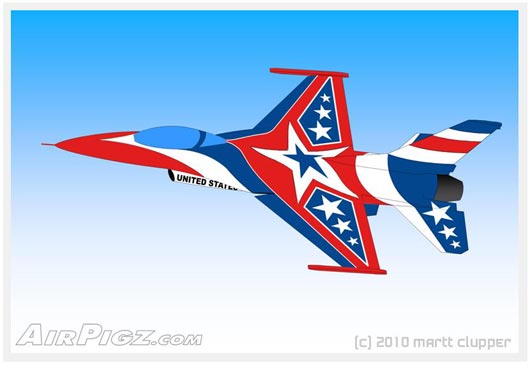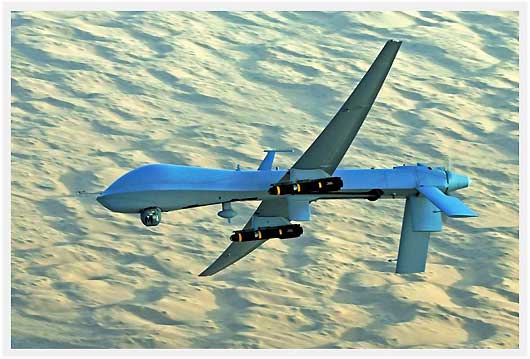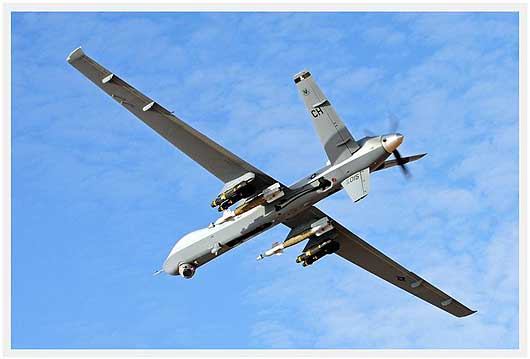Forecast Reno 2012: 'SharkBite' Wins Super Sport At 427 MPH!
 Saturday, September 11, 2010 at 04:10PM
Saturday, September 11, 2010 at 04:10PM  SharkBite, my fantasy concept for a 'Super Sport' 427 mph Reno racer.
SharkBite, my fantasy concept for a 'Super Sport' 427 mph Reno racer.
It's pure fantasy, but I actually believe that the aerodynamics I've worked into this drawing represent a lot of where the future is headed. SharkBite is actually an evolution of a design I've been playing with on paper for the last year. The original design wasn't a hyper-powered beast, but I found that turning it into one was pretty easy. The general concept here picks up on several design elements that I've been thinking about a lot in the last year, and I'll mention a few of them now. Some of them, however, I'm not going to mention. I figure it's good to keep you guessing a little here.
The big foundational idea in SharkBite is the 3 Lifting Surface Configuration (3LSC) for the wings. Similar to my retro airliner design (Empress 400), SharkBite taps into 3LSC, much like the Piaggio P180 Avanti. You might think I'm a little obsessed with 3LSC, but I figure when you see the Avanti offer a much roomier cabin cross-section, a 100 mph higher cruise speed, and does this on 80% of the horsepower of the King Air 350, it's something to pay attention to. The aerodynamic benefits of the Avanti configuration are stunning, and I'd say it's worthy of some obsession.
So, SharkBite has a small main wing mounted well aft of the CG, with a very small fixed forward wing to hold the nose of the airplane up. Then, mounted between two canted vertical stabilizers, an aft mounted horizontal tail completes the array and handles the pitch control. The benefits expected here would be the same as the Avanti: no horizontal surfaces pushing down (and creating drag), smaller overall wing areas which reduce drag, and overall, less structure weight which has all kinds of benefits.
The aft mounted fan taps into the ever growing technology of swept wing design in the blades, along with a variety of other cutting edge ideas in advanced prop design. That long stinger sticking out the back is actually intended to be the spinner for the prop. I also imagine SharkBite being powered by an air-cooled Lycoming Thunderbolt engine similar to what the Nemesis airplanes run. As always, effective cooling that also keeps drag to a minimum can be one of the biggest challenges, and the idea would be to incorporate several unique ideas into this airplane. The bad news is that crazy people like me always have wild ideas about how to make things work better, and usually find out they don't work so well in the real world. However, some creative thinking and hardcore testing might lead to some interesting solutions that do in fact yield performance increases. I have some in mind that not only deal with the need for ground cooling with the pusher prop, but are also intended to be used to help reduce drag while in flight.
Lastly I'll mention one feature that I think is just way-cool on SharkBite. You might notice you can see my blocky drawing of a pilot sitting inside with his eye on the next pylon. If this was the real airplane, you'd still be able to see him like that - all of him... the whole front of the fuselage is clear Lexan. Everything forward of that diagonal line is see-thru. My idea is to use chrome-moly steel tubing for the primary structure (not shown), so attaching thin, all-compound-curve Lexan panels on the front would be relatively easy. This would give the pilot a wildly awesome view from inside, especially at over 400 mph and 50 feet off the ground! That fuse is also a fully circular cross-section, and symmetrical when sliced vertically or horizontally. This means that building molds for the aft carbon fiber skin panels would also be relatively easy.
In all, SharkBite is small, light and full of advanced aerodynamic ideas. Couple all that with about 600 or 700 horsepower and I think you just might have an airplane that can race the course at Reno at 427 mph. Hey, I gotta run... pardon me while I go do a little more Reno 2012 dreamin' : )
 Martt |
Martt |  5 Comments |
5 Comments |  3LSC,
3LSC,  Racing,
Racing,  Reno,
Reno,  aerodynamics,
aerodynamics,  homebuilt
homebuilt  Email Article
Email Article 






















































































